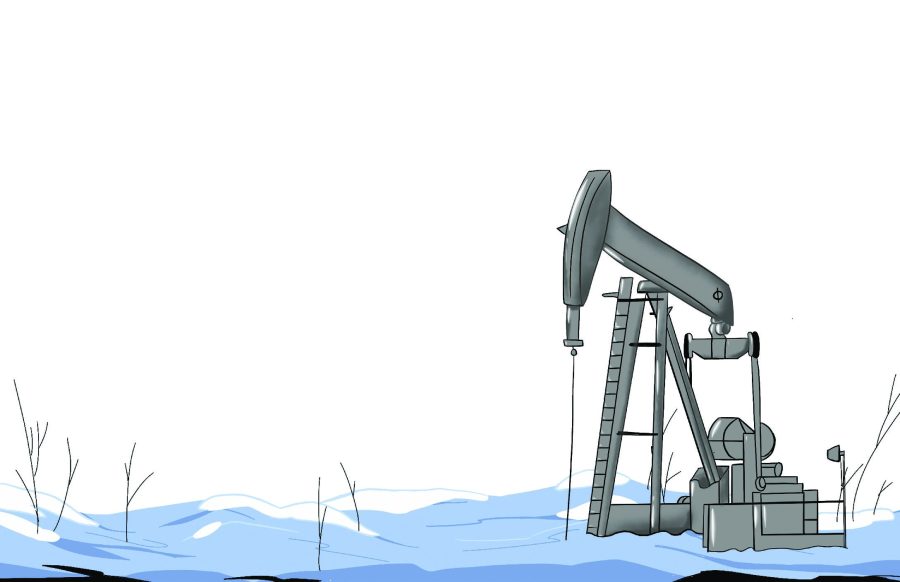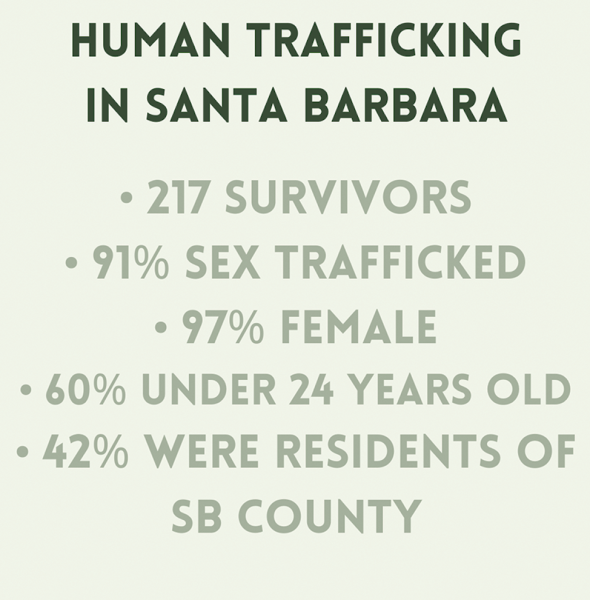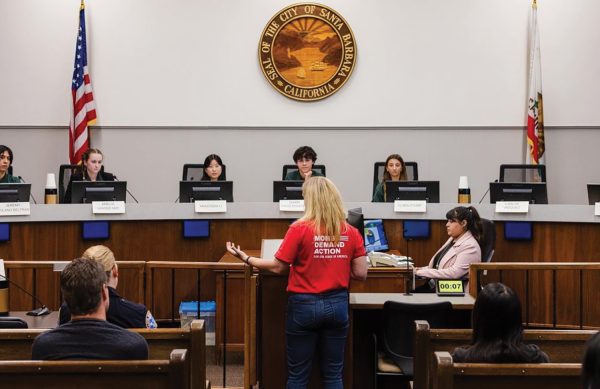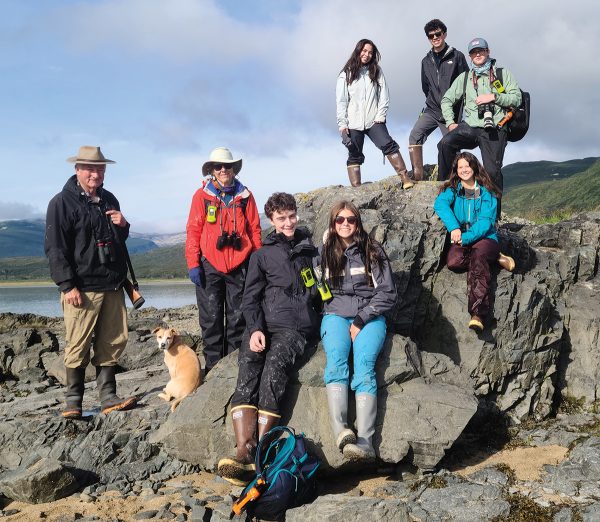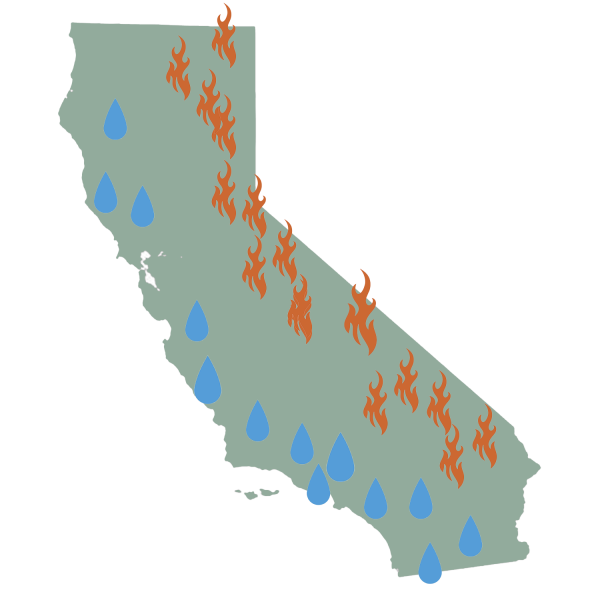Selling Alaska: Climate vs. Economy
Environmental activists and federal judges battle over the Biden administration’s decision to approve the Willow Project, the nation’s newest and largest drilling project located in Alaska.
June 5, 2023
In the midst of both a climate and economic crisis, the U.S. government fights rising gas prices with planet-warming carbon pollution.
On March 13, the Biden administration approved ConocoPhillips’ oil drilling project on Alaska’s North Slope, deemed the Willow Project.
ConocoPhillips is a Houston-based energy company that has been exploring and drilling oil in Alaska for decades. They are Alaska’s largest crude oil producer, and its largest owner of exploration leases, and is currently the only industry that has oil drilling operations in Alaska’s National Petroleum Reserve.
ConocoPhillips proposed Willow, originally approved by the Trump administration in 2020, and reapproved by the Biden administration in 2023, which initially reduced the drilling to take 90% of the land’s oil, instead of 100%.
According to ConocoPhillips’ estimates for the next 30 years, the oil drilling project will create several new pipelines, a central processing plant, 200 oil wells, an airport, a gravel mine, and the extraction of 629 million barrels of oil. Since the project has yet to be fully constructed, the oil will take years to reach the market.
While waiting for construction to complete, ConocoPhillips faces both praise and criticism from the public.
According to Alaska Governor Mike Dunleavy, “The project is expected to produce at least $8 billion in revenue for federal, state and local governments.”
A projected benefit of the project is that it will boost the economy, and will help ensure that the United States has a reliable supply of energy that is not reliant on oil suppliers under foreign authoritarian countries.
Over the past year, gas prices have spiked after Russia invaded Ukraine and as OPEC nations, such as Saudi Arabia, decreased supply. “Making more U.S. oil could net a tidy profit for producers while lowering prices at the pump for drivers,” said CNN business writer Chris Isidore, commenting on massive price spikes in oil.
Producing more oil in the United States would help lower gas prices and prevent weaponized prices in global energy markets from affecting the nation.
Aside from boosting the economy, this project will produce billions of dollars of tax revenue and economic activity for Alaska, since Alaska has a guaranteed income program funded by oil taxes.
The project will also produce up to 2,500 jobs for native Alaskans during construction and 300 long-term jobs. These jobs and influx of state profits will help support public services, such as schools and infrastructure investments in isolated villages.
AP Environmental Science student, junior Griffin Rick, agrees that there are both pros and cons to the project. “I know that it is currently the best option economically, but I think oil has a long list of negative externalities that don’t necessarily outweigh the positive economic benefits.”
While the project comes with many benefits, it is also important to recognize the downside to oil harvesting.
The Willow Project will generate enough oil to release 9.2 million metric tons of planet-warming carbon pollution a year: the equivalent of 2 million gas-powered cars.
This will create irreversible damage to the world’s climate, and ConocoPhillips will become one of the top American contributors to carbon emissions.
Being described as “the last frontier of the United States” by the National Park Service, Alaska is one of the most environmentally well-preserved parts of the country, exceeding landscape condition values compared to the rest of the states. Alaska’s ecosystems, Arctic wildlife, and the indigenous peoples who depend on the land for subsistence will all be put in harm’s way as the environment falters.
The caribou migrations–one of the most important food sources to certain Alaskan tribes-and their ability to travel across once-frozen areas will be at risk as Alaska’s climate warms.
Some coalition of native Alaskan groups support the project, as it will be a new source of revenue for the region. “Willow presents an opportunity to continue that investment in the communities,” said Nagruk Harcharek, president of an Iñupiat advocacy group. “Without that money and revenue stream, we’re reliant on the state and the feds.”
However, other Alaskan natives–who live closer to the planned project –are concerned about the environmental and health impacts that come with oil drilling.
While some defend the project as economically vital to the United States, the question is whether or not oil money can counter the damages caused by climate change.
The Biden administration is receiving backlash from environmentalists and the media for going against Biden’s preterm promise: “No more drilling on federal lands, period.”
According to CNN climate reporter Ella Nilsen, the Biden administration received “over 1 million letters” protesting the project and a petition on Change.org received more than 5 million signatures, and a surge of social media activism emerged on apps such as TikTok and Instagram.
ConocoPhillips and environmentalist law groups, such as Earthjustice, are racing to beat each other in lawsuits. Earthjustice is expected to file a complaint against the Biden administration, potentially claiming their authority to protect surface resources on Alaska’s public lands includes taking steps to reduce planet-warming carbon pollution.
Environmentalists temporarily blocked ConocoPhillips from pursuing the project back in March. In April, however, a federal judge re-approved the project for continuation of the project’s construction.
Oil supplies energy for our daily life. However, its production significantly impacts our environment in terms of air and water pollution, greenhouse gas emissions, and habitat destruction. The battle will continue to play out in years to come, as environmentalists and energy companies argue during the project’s construction.
According to Steven Mufson, Washington Post reporter who covers the business of climate change and who spoke to Laguna students, “Willow marks the culmination of years of debate over the future of drilling in the Arctic.”
To Californians, the concept of oil drilling is not foreign and they are not strangers to the arguments over oil’s benefits and conflicts.
Offshore oil drilling began in California in 1896 when operators in Santa Barbara County drilled from piers built out over the ocean. Protests against oil drilling erupted when the 1969 Santa Barbara oil spill occurred.
“I think this project is sad and disappointing, to be honest,” said senior Sadie Johnson. “We have come too far in scientific advancements to resort to old ways that negatively impact our environment.”



